Header logo
header top contact widget
Oral Sedation
Know The Qualifications of Who Places Your Dental Implants.
Posted on Apr 05, 2021 by William J. Claiborne, DDS MS
When someone has lost a natural tooth, the word that stands out for me is “lost”. A missing tooth means a lot can be lost.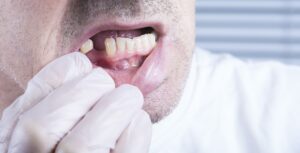
Tooth loss not only leaves a gap in the appearance of a smile, its absence can lead to movement of surrounding teeth.
For example, some people assume that a lost back tooth that is not visible doesn’t need replacing. This is an incorrect assumption. Without all teeth in their proper positions, a gap can cause others to tilt and turn. Additionally, the one above or below will grow longer. These misalignment issues can lead to broken, fractured, or chipped teeth.
Misaligned teeth can also lead to strain on the TMJ, or jaw joints. These joints, located on each side of the head just in front of the ears, are hinges that connect the lower jaw bone to the skull. They are in motion almost constantly.
When the jaw joints experience frequent strain from misaligned teeth, they can cause pain that extends out to head, neck and shoulder muscles. TMJ-related pain can be the source for headaches, migraines, facial pain, ear ringing, dizziness, pain when chewing and difficulty opening the mouth fully.
Obviously, replacing teeth is important. Because of many factors, a dental implant is the superior choice in tooth replacement. A dental implant is a lifetime replacement option. Dental implants restore the ability to bite, chew, speak and laugh confidently without worry. The security of their strength and stability can also be greatly beneficial to one’s self-esteem and self-confidence.
Too, dental implants actually enhance the well-being and lifespan of surrounding teeth. They are an exceptional value when considering their ability to restore the most natural look, feel and function.
In dental implant treatment, the implanted portion is positioned in the jaw bone as a tooth root replacement. This provides attached teeth with the same foundation as natural tooth roots. A partial or bridge simply sits on top of gum tissues and relies on adjacent teeth for support.
Yet, it can be in WHO is involved in your dental implant diagnosis and placement that can provide you with optimal comfort and lifelong success.
When dental offices offer dental implants, many general dentists refer the placement portion to a periodontal specialist. For their patient, this can mean a higher level of comfort and success, especially for complex needs.
However, some dentists offer dental implant placement in their offices. While some have taken extensive courses in implant dentistry, others may have taken a weekend course here and there. These quick courses are typically hosted by an implant manufacturer who trains attendees with a limited selection of implant types. This can limit the patient’s choices when relying on appropriate recommendations for his or her unique needs.
Although there are many factors to go forward with a dental implant, your choice of doctor to place the implanted portion can greatly increase your potential to enjoy your dental implant for a lifetime.
As a periodontist, an aspect of the specialty is the advanced training in the diagnosis and placement of dental implants. This specialized expertise affords patients with a wider variety of choices when it comes to implant systems as well as success in treatment outcome.
For example, consider a patient who is missing a lot of bone mass (often due to missing natural teeth for many years). An implant placed in the upper jaw in too-shallow bone can work its way into the sinus cavity. A lower implant in insufficient bone depth can reach a nerve that runs horizontally through the lower jaw (the mandible).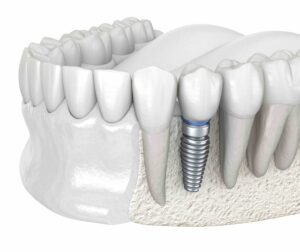
Additionally, the shape, size and the number of teeth to be attached to an implant have much to do with the type of implant system selected. When the placement doctor is only familiar with one or two types, the limitation may pose problems for the patient in the future.
Along with an intricate knowledge of the specific type of implant needed, proper placement angles and depth have much to do with the overall success of the implant. For optimal results, the doctor placing the implant should be skilled in the selection of the implant angles and positioning depths.
In our Asheville periodontal office, we restore the well-being of smiles. We also help patients replace bothersome dentures or partials so they can resume eating the foods they love and laugh confidently in social gatherings.
The doctor is not the sole factor in success, however, Along with proper selection and placement, a patient must take measures to ensure proper oral hygiene at home. Oral bacteria can contribute to an infection that works its way into the bone surrounding the implant. In some cases, the only way to resolve the infection is to remove the implant.
The most troubling thing I see in implant dentistry is when a patient opted for a “good deal” with a less-experienced doctor, and having to remove a ‘failed’ implant.
When a patient entrusts their implant treatment to a skilled doctor and adheres to hygiene and healing guidelines, having an implant fail is very unlikely. The success rate of today’s implant dentistry is excellent – over 97 percent.
Today’s implant dentistry is successful, safe, dependable and can provide nearly immediate benefits. As a dental specialist who has stayed on the cutting edge of implant dentistry’s techniques, technology and materials, I am pleased to witness the transformations our patients undergo after treatment.
The type of dental implant best suited for you can be determined after an examination and review of x-rays (we use Cone-Beam digital imaging). Call 828-274-9440 to begin with a private, no obligation consultation to discuss your best options.
Bad Breath – The “Body Odor” of the Mouth.
Posted on Mar 09, 2021 by William J. Claiborne, DDS MS
“Whoa!!!”
That may be our unspoken reaction when we encounter someone who’s breath odor reeks. And, we’ve all encountered it. It tends to leave a rather negative impression of the individual; one that ‘sticks’ with us every time we see him or her in the future.
Occasionally, I like to address the causes of bad breath since, at one time or another, it’s an issue for us all. Bad breath, like body odor, leaves an undesirable imprint.
Although some health conditions can be the source of bad breath, it most commonly occurs due to an overload of oral bacteria. Too many bacteria in the mouth create an odor — a sulfuric, putrid odor.
Bacteria are living organisms that eat, reproduce and emit waste. Their ability to reproduce is astounding, resulting in a consistently growing number of waste-producing creatures.
Poor oral hygiene is the most common cause for bad breath. Not brushing and flossing or doing so adequately allows oral bacteria to reproduce, which leads to plaque.
Plaque is the sticky film you feel on teeth when you’ve missed brushing or when you wake up. When not removed thoroughly on a daily basis, plaque turns into a cement-hard substance known as tartar. This mass is actually a solid colony of oral bacteria that attaches to teeth. In this form, it cannot be brushed or flossed away.
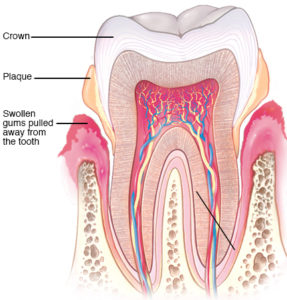 Tartar attacks enamel and gum tissues. As bacteria multiplies, it causes the gum tissues to become inflamed. This inflammation can quickly develop into gingivitis, an early form of gum disease. If not resolved fully, however, gingivitis can lead to full-blown periodontal (gum) disease.
Tartar attacks enamel and gum tissues. As bacteria multiplies, it causes the gum tissues to become inflamed. This inflammation can quickly develop into gingivitis, an early form of gum disease. If not resolved fully, however, gingivitis can lead to full-blown periodontal (gum) disease.
Occasional bad breath is a nuisance but can generally be controlled with good oral hygiene, keeping our mouth moist and limiting sugar. Things like drinking sugary colas and a diet of high carbohydrate foods rev up bacteria reproduction even more, boosting their ability to grow and thrive.
However, frequent bad breath is not only embarrassing, it is a warning sign.
As one of the symptoms of periodontal (gum) disease, persistent bad breath may be accompanied by tender gums that bleed easily when brushing or tender, swollen areas around some teeth.
As gum disease advances, symptoms include gums that turn red in color and become sore, swollen and bleed easily when brushing. As it worsens, bad breath becomes persistent. Pus-filled pockets may develop near the base of some teeth. Eventually, teeth may loosen and require removal.
While what we consume can greatly contribute to the ability of these icky organisms’ ability to reproduce, a common one is having a dry mouth. This condition is known as xerostomia (zeer-o-STOE-me-uh).
Good saliva flow helps to keep bacteria moving out of the mouth. However, when brushing is infrequent or the mouth becomes dry, saliva is less able to manage the bacteria levels in the mouth.
A dry mouth may seem less likely to be a breeding ground for bacteria since they typically thrive in environments that are warm, moist, and dark. However, when saliva flow is unable to efficiently cleanse bacteria buildup from the mouth, they are easily able to reproduce.
Having ‘dry mouth’ is rather common today. In addition to a part of the aging process, a number of common medications (including anti-depressants, decongestants, and anti-histamines) have a side effect of oral dryness.
Too, many beverages contribute to having a dry mouth. These include colas, coffee, tea, and those containing alcohol. (Please note that colas are acidic and most contain caffeine. These are anything but ‘refreshing’, doing very little to hydrate the body. Stick to plain water to quench your thirst and add moisture to the body.)
Another way that oral bacteria can run rampant has to do with our oral hygiene routines. To be truly thorough in cleaning tooth surfaces, it is recommended to spend two minutes per brushing, twice a day (whether manual or electronic).
It is estimated that nearly a third of American adults brush their teeth for an insufficient amount of time. Even worse, about that same amount fail to brush twice a day. This means that an alarming amount of bacteria remain to grow and thrive in the mouth.
Proper brushing and flossing is necessary. Brush for at least two minutes twice daily and swish thoroughly. Use a circular motion rather than scrub teeth back and forth to avoid damaging tender gum tissues. Never use a hard bristle tooth brush or brush with harsh substances such as baking soda! These can wear down tooth enamel and wear away precious gum tissue.
You may be surprised to learn that brushing only tackles about half the amount of bacteria in the mouth, leaving a tremendous amount that continue to grow and thrive. The tongue actually harbors 58 – 65 percent of the bacteria in the ‘oral cavity’.
Oral bacteria love to take up housing in the tiny bumps and grooves of the tongue since they are not easily dislodged. Thus, it’s necessary that tongue cleaning be a part of your oral hygiene regimen at home to keep bacteria levels under control.
Some toothbrushes have a “tongue scraper” on the reverse side of the bristles that’s an effective option. Or, you can brush your tongue with the bristles after your teeth are brushed. Be sure to reach towards the back of the tongue where the majority of bacteria exist.
An advantage of achieving and maintaining a clean, healthy mouth is being confident when close to others. Plus, you’ll be contributing to the health and well-being of your entire body. Research has shown that a healthy mouth is a supportive component of a healthy you!
If you are experiencing symptoms of gum disease or concerned your breath is frequently bad, call 828-274-9440. We’ll arrange a periodontal exam in our comfortable Asheville periodontal office.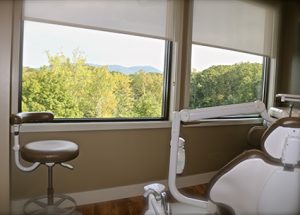
Here, we are committed to the comfort of each patient as well as those who have avoided dental care in the past due to fear. Dental fear is common, and we have a reputation for a gentle touch and respectful care. We also make oral and IV sedation (twilight sleep) available.
Let’s help you establish a healthy smile and feel confident in closeness!
Missing Teeth? Know The Ends-&-Outs of Dental Implants
Posted on Jan 29, 2021 by William J. Claiborne, DDS MS
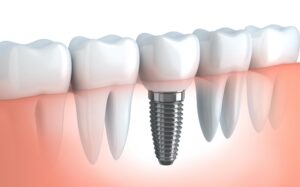 If you are one of the millions of adults who are missing one or more natural teeth, you are actually in the majority if you are over the age of 50.
If you are one of the millions of adults who are missing one or more natural teeth, you are actually in the majority if you are over the age of 50.
According to the Centers of Disease Control & Prevention (CDC), by the age of 50, Americans have lost an average of 12 teeth. For those between the ages of 50 to 64, over 10 percent have no remaining natural teeth. Twenty-six percent – more than one-fourth – of adults between 65 – 74, have lost ALL of their natural teeth.
Replacing natural teeth may seem simple. Often, people assume that a partial or bridge will solve the problem. Yet, these dental appliances merely worsen an already precarious situation. While these dental prosthetics “mimic” the appearance of teeth, what’s occurring beneath the gum line has a significant impact on what’s to come.
To understand the rocky road in the future, consider the foundation of natural teeth – the jaw bone.
The reason biting and chewing occurs dependably and with stability with natural teeth is because they are secured by the jaw bone. When natural teeth are removed, their roots are no longer present in the jaw bone. The presence of these roots actually provides stimulation to the jaw bone, which helps to preserve the bone’s mass. Without this stimulation, the bone resorbs, a process of which bone mass “melts away”.
Resorption is to blame for dentures or partials that start to move or slip over time, even though the fit was snug when first made. Because resorption reduces bone height, the ridge the denture was contoured to fit begins to flatten. A shrinking ridge leaves the denture with an insufficient base.
The pace of bone loss speeds up a little more each year. The pressure of a denture on the ridge accelerates the rate. For people who sleep in their dentures or partials, the continual pressure ramps up the pace further.
As the ridge flattens, denture adhesives or pastes become of little help while trying to eat. This leads many denture wearers to switch to a diet of soft foods that dissolve easily in the mouth. Often, the pleasure of eating is overshadowed by trying to avoid sore spots on tender gum tissues or embarrassing slips.
Declining bone mass also leads to changes in facial appearance, contributing to an appearance that is far older than one’s actual age. As bone mass declines, jowls form as facial muscles detach from a shrinking bone mass. Deep wrinkles form around the mouth and the corners of the mouth turn downward, even in a smile. As bone loss becomes severe, the chin points and the nose moves closer to the chin, creating a ‘granny look.’
As an Asheville periodontist, my dental specialty includes the diagnosis and placement of dental implants. Dental implants are the closest thing to natural teeth, for many reasons.
Dental implants restore the ability to bite and chew comfortably and without the fear of embarrassment or uncomfortable rubbing. Because implants are placed in the jaw bone, they have the same dependable foundation as that of natural teeth.
Among the many benefits of dental implants, they also provide stimulation to the jaw bone. This helps to halt the process of bone loss. For those who have already lost a great deal of bone loss, bone rebuilding procedures can be performed to restore a healthy, more youthful face shape.
An added advantage of implants is they do not rely on the crowning of otherwise healthy, neighboring teeth for the mere purpose of supporting a bridge. While a traditional crown-&-bridge combination relies on crowned teeth for support, an implant uses the sturdy foundation of your jaw bone.
There are over 40 different types of dental implant systems, each designed to accommodate specific needs and goals. For example, some implants are designed for placement in minimal bone mass. Others can be strategically placed to support a bridge of two or more teeth or support a full arch.
When choosing Dental Implants to replace teeth, you are making a lifelong investment. Since implants are designed to last a lifetime, they provide a ‘one & done’ choice for dependable tooth replacement. There are not many things these days that give you so much value!
If you struggle with dental fear or anxiety, rest assured that patient comfort – at every appointment – is of the highest priority. Our office is structured to attend to the specific needs of each patient, gently and respectfully. Patients begin with a consultation in a comfortable, private setting rather than seated in a treatment chair.
For patients who desire a “sleep” state, we offer oral sedation as well as I.V. sedation (twilight sleep). Oral sedation is a pill that helps patients relax. It also has an amnesiac effect, leaving most with little or no memory of treatment afterward.
I.V. sedation places the patient in a deeper sedative state (twilight sleep), also erasing memory of the procedure. It is administered by a doctor of anesthesiology for optimal comfort and safety.
With both, patients are closely monitored with advanced safety equipment throughout treatment. Patients also find our entire staff to be a unified team, each bringing a sincere level of compassion and commitment to excellent care.
Rather than bypass the very best option for replacing lost teeth, consider a consultation to discuss the benefits, anticipated costs, and treatment process. Call 828-274-9440 for an appointment in our Asheville periodontal dental office.
Tooth Loss Cause of Shrinking Face, Sunken-In Mouth
Posted on Jan 14, 2021 by William J. Claiborne, DDS MS
The aging process is not an easy one. Joints begin to creak, muscles are more easily strained, skin dries out, eyesight wanes and hearing declines.
Yet, throughout the aging process, some adults seem to go through it as less of an ordeal than others. Although diseases and certain health conditions can occur regardless of how well some people manage, some people take a number of steps that can have a significant impact on aging well and “getting old.”
The basics of good health include a diet low in sugar, alcohol and unhealthy fats. NOT smoking is a 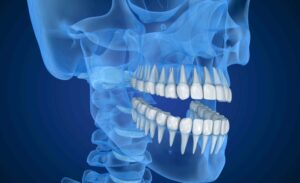 big factor in maintaining a healthy body. Regular exercise, sufficient sleep and regular physicals and dental check-ups are all beneficial.
big factor in maintaining a healthy body. Regular exercise, sufficient sleep and regular physicals and dental check-ups are all beneficial.
A factor that plays a bigger role in having good overall health is having natural teeth. Having the ability to comfortably bite and chew food is important to effective digestion, since the digestive process begins in the mouth. When adults struggle to eat with a denture or partial, the efficiency of this initial stage of digestion is compromised.
It’s not unusual for adults who have “rocky” or “slippery” dentures to opt for soft foods that dissolve easily in the mouth. These are often carb heavy and lack the nutritional value of a diet that combines healthy proteins, fruits and vegetables. However, missing teeth or dentures that move when eating can cause other detrimental problems.
When people sense their dentures may cause embarrassment when eating, speaking or laughing with others, social involvement can take a hit. According to a 2012 statement by the World Health Organization:
Oral health is essential to general health and quality of life. It is a state of being free from mouth and facial pain, oral and throat cancer, oral infection and sores, periodontal (gum) disease, tooth decay, tooth loss, and other diseases and disorders that limit an individual’s capacity in biting, chewing, smiling, speaking, and psycho-social well-being.
An extensive study on “The Link Between Teeth and Emotions” was published by Clinical Psychology of Oral Health (https://journals.sagepub.com/doi/full/10.1177/2158244017728319) in 2017.
In the study, the concept of quality of life was categorized in five dimensions: physical well-being, material well-being, social well-being, emotional well-being, and development and activity”.
The authors found that oral health is “an integral part of general health and well-being” and examined how oral disorders may impair at least three of the five dimensions: the physical, emotional, and social well-being.
The authors found also an association between oral health and late life depression (LLD) in older adults, who experienced “compromised social function and impaired self-maintenance skills (e.g., bathing, dressing, hygiene).” This depression can cause a loss of pleasure and interest for daily life activities, and even in the interest in personal oral hygiene.
Oral health not only has an impact on the psychological well-being of older adults, the physical changes attributed to tooth loss are of equal concern to many denture wearers.
Let’s look at your oral anatomy for a moment…
Your natural teeth are supported by your upper and lower jaw bone, known respectfully as the Maxilla and Mandible. With these strong, study bones, tooth roots are held securely. Thus, biting and chewing occurs comfortably.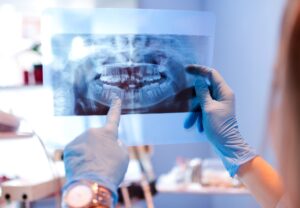
The jaw bones are actually kept healthy by the presence of tooth roots. These roots provide stimulation to the bone as well as nourishment that feeds through the tooth’s interior.
When a tooth is removed, so is the stimulation and nourishment to that area of the jaw bone. Without it, the bone begins to shrink. As it declines in height, the adjacent teeth are more vulnerable to loss. Statistics show that teeth adjacent to areas where natural teeth are missing will be the most likely to be lost next.
This has a domino effect. Partials can replace the presence of teeth above the gum line, but there is nothing to benefit the jaw bones below. Thus, tooth loss continues and can go from a few missing teeth to losing all teeth (being “edentulous”).
According to the Center for Disease Control & Prevention (CDC), 69 percent of adults between the ages of 35 – 44 have lost at least one permanent tooth. By age 50, Americans are missing an average of 12 teeth. For adults between the ages of 65 – 74, 26 percent are missing all of their natural teeth. That’s over one-fourth of the adult population over age 65.
Although dentures and partials mimic the presence of teeth, the jaw bones below are shrinking away, and at a rather rapid pace. The pressure of wearing a denture or partial actually speeds this process up, known as “resorption.”
As these bones decline in mass, deep wrinkles form around the mouth. The corners of the mouth turn downward. The chin takes on a more pointed form and the mouth sinks into the face. The nose seems to get closer to the chin as the jaw bones thin. Jowls form as facial muscles detach from shrinking bone structure.
Dental implants were designed to recreate the presence of natural teeth both above and below the gum line. Because teeth attached to the implants are supported by the jaw bones, the study foundation restores the ability to bite and chew without movement or fear of embarrassing slips.
For patients who are missing a great deal of bone, we offer bone rebuilding that does not require a bone graft. We also perform sinus lifts (when the upper jaw has declined to a significant level) to restore sufficient bone distance between vital structures.
For many of our dental implant patients, their lives become more active with the restored confidence. They become more socially involved, have more self-confidence and higher self-esteem.
Although dentures and partials may seem to be a less-expensive way to replace teeth, the savings is hardly worth the detrimental repercussions associated with them. Too, the upkeep required for dentures over time is actually high, considering replacement, relines and repairs.
As a periodontal specialist serving Western NC, I take great pride in the diagnosis and placement of dental implants. Each is selected based upon the patient’s individual needs and goals. We provide oral or I.V. sedation to ensure a comfortable experience and a friendly, respectful environment.
Begin with a friendly conversation in our private consultation room. In this comfortable setting, we’ll discuss your options and I’ll answer your questions. For many people, they are able to make a decision on how they wish to proceed after this conversation, even if it’s to go forward with dentures. We are supportive of each person’s preferences.
Call 828-274-9440 to schedule a consultation in our state-of-the-art Asheville periodontal dental office. I think you’ll feel especially confident in learning about our specialized skills and highly-advanced technology, not available in many dental offices in this area.
Recent Posts
Categories
Archives
- September 2024
- August 2024
- July 2024
- June 2024
- May 2024
- April 2024
- March 2024
- February 2024
- January 2024
- December 2023
- November 2023
- October 2023
- September 2023
- August 2023
- July 2023
- June 2023
- May 2023
- April 2023
- March 2023
- February 2023
- January 2023
- December 2022
- November 2022
- October 2022
- September 2022
- August 2022
- July 2022
- June 2022
- May 2022
- April 2022
- March 2022
- February 2022
- January 2022
- December 2021
- November 2021
- October 2021
- September 2021
- August 2021
- July 2021
- June 2021
- May 2021
- April 2021
- March 2021
- February 2021
- January 2021
- December 2020
- November 2020
- October 2020
- September 2020
- August 2020
- July 2020
- June 2020
- May 2020
- April 2020
- March 2020
- February 2020
- January 2020
- December 2019
- November 2019
- October 2019
- September 2019
- August 2019
- July 2019
- June 2019
- May 2019
- April 2019
- March 2019
- February 2019
- January 2019
- December 2018
- November 2018
- October 2018
- September 2018
- August 2018
- July 2018
- June 2018
- May 2018
- April 2018
- March 2018
- February 2018
- January 2018
- December 2017
- November 2017
- October 2017
- September 2017
- August 2017
- July 2017
- June 2017
- May 2017
- April 2017
- March 2017
- February 2017
- January 2017
- December 2016
- November 2016
- October 2016
- September 2016
- August 2016
- July 2016
- June 2016
- May 2016
- April 2016
- March 2016
- February 2016
- January 2016
- December 2015
- November 2015
- October 2015
- September 2015
- August 2015
- July 2015
- June 2015
- May 2015
- April 2015
- March 2015
- February 2015
- January 2015
- December 2014
- November 2014
- October 2014
- September 2014
- August 2014
- July 2014
- June 2014
- May 2014
- April 2014
- March 2014
- February 2014
- January 2014
- December 2013
- November 2013
- October 2013
- September 2013
- August 2013
- July 2013
- June 2013
- May 2013
- April 2013
- March 2013
- February 2013
- January 2013
- December 2012
- November 2012
- October 2012
- September 2012
- August 2012
- July 2012
- June 2012


